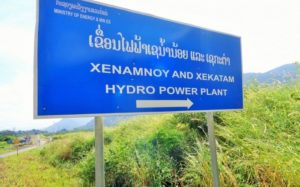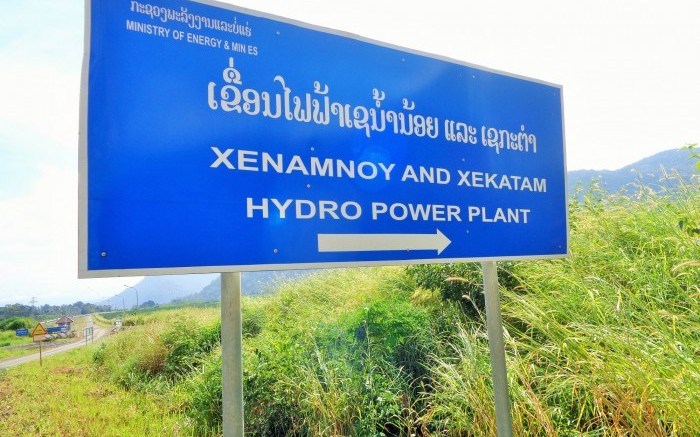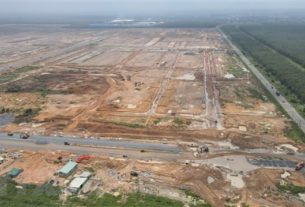 United Nations (UN) experts call for firms behind Laos’ Xe Pian-Xe Namnoy dam collapse to pay as 7,000 survivors await compensation
United Nations (UN) experts call for firms behind Laos’ Xe Pian-Xe Namnoy dam collapse to pay as 7,000 survivors await compensation
Almost two years after a dam in Laos collapsed, displacing thousands, the people affected struggle to secure compensation while living in deteriorating relocation centers. A group of UN experts is now calling for the governments and companies involved to finally follow through on the recovery effort.
By Skylar Lindsay
Nearly two years after the collapse of the Xe Pian-Xe Namnoy dam in Laos, a group of United Nations (UN) experts is calling on governments and businesses to address ongoing human rights violations experienced by survivors of the disaster.
“Thousands of survivors lost everything and continue to face uncertainty and neglect,” the statement from the experts read. “Governments, as well as companies and banks, stand to profit handsomely from the hydropower project, yet communities who lost everything have received only broken promises.”
In July 2018, the hydropower dam in southern Laos collapsed, destroying 13 villages, killing 71 people and displacing at least 7,000 more. The government promised survivors compensation and land where they could rebuild their lives, but two years later, many residents are either still living in relocation centers or have abandoned them as conditions deteriorate.

Radio Free Asia spoke with survivors at a number of relocation centers in late April, many of whom described uninhabitable conditions.
“The shelter is uninhabitable because it’s too hot, it’s dirty, it smells, and has no access to water,” one woman said. “We’re all scared that we might catch some disease.”
“Another problem is that the rice is rotten,” said another local resident living in a relocation center. “Now they are saying that our rice might smell a little but it is still edible…We have no choice but to eat [rotten] rice like prisoners. Many people sell the rotten rice to the brewery to buy better and more expensive rice [in smaller amounts].”
Compensation delayed
The Lao government has largely acknowledged the shortcomings in the recovery efforts, promising to do what it can to improve conditions and ensure compensation. But as the country struggles to prevent the spread of COVID-19 and address its impacts, the government has few resources to spare.
“Community members, including indigenous peoples, have yet to receive adequate compensation and remain in substandard temporary housing with little privacy and inadequate access to food, water, medical supplies, sanitation and land,” the UN experts said of the situation. “People reportedly have not been meaningfully consulted about relocation or provided with a timeline.
Last year, the government allocated a 20-by-40-meter plot of land to many survivors and announced plans to build houses on the plots but as of April, only 36 homes have been constructed.
The district chief of Sanamxay, where some of those relocated are living, told Radio Free Asia that survivors will likely not receive the rest of the compensation they have been promised until after the COVID-19 pandemic “is over.”
The UN calls on dam developers, governments to follow through
The UN experts called on the businesses involved in the Xe Pian-Xe Namnoy dam to do more to provide compensation for the people impacted by the disaster and to ensure their rights are respected.

The hydropower project was a joint venture by South Korean companies Korea Western Power and SK Engineering & Construction, Thai firm Ratchaburi and Lao Holding State Enterprise. The US$1 billion dam also had financial backing from the Export-Import Bank of Korea and four Thai banks—Krung Thai Bank, the Bank of Ayudhya, Thanachart Bank and the Export-Import Bank of Thailand.
“It is absolutely outrageous that so little has been done, despite government assurances and the deep pockets of the investors involved,” the UN experts wrote this week.
Laos continues dam push despite risks, compensation and relocation issues
Laos continues to push ahead with its plan to become the “battery of Southeast Asia” despite risks of another disaster and problems with compensation and relocation around existing dam projects. The country has already opened two dams on the lower Mekong river for operation—the Xayaburi and Don Sahong projects—despite links between hydropower and drought across the river basin.
The country’s hydropower plans are closely tied to its efforts to graduate from United Nations Least Developed Country status in 2024. The government has ordered a pause on all hydropower construction after a worker at a mining company tested positive for COVID-19, but the push will likely continue as China, the backer of many dams in Laos, reboots its economy.
Residents relocated for the construction of hydropower dams in Laos have voiced similar concerns to the survivors of the Xe Pian-Xe Namnoy collapse, citing a lack of compensation and transparency.
Hundreds of families in Luang Prabang and Phongsaly provinces have been relocated for the Nam Ou hydropower project, a Chinese-backed cascade of seven dams in northern Laos. Many of them say the relocation sites leave them without access to livelihoods or even water. “At this new village, we have no land to grow anything, and we just stay at home doing nothing,” one resident relocated for the Nam Ou 3 Dam told Radio Free Asia.
“We don’t have enough land to grow rice. We only have gardens, and now the weather is so hot and dry that nothing can grow,” said one resident relocated for the Nam Ou 4 Dam. “Our villagers have no other way to make a living, and we have no money to buy food.”

The Nam Ou dams are now 90% complete but relocated residents say they haven’t been fairly compensated for their land. “We haven’t received any compensation for our land. The authorities said that we had no titles for the land and hadn’t paid property taxes, so they paid us only for our fruit trees and vegetables,” said one resident in Phongsaly.
The Lao government has shown that it may be open to negotiation on issues of compensation and relocation. The government recently established a committee to evaluate the safety of dams across the country. The Xe Pian-Xe Namnoy collapse pushed the government to negotiate with dam developers to secure some compensation, but the affected communities have had very little say in the process and have yet to see much of the promised money and land.
The course of hydropower in Laos continues to show what’s at stake when developers and governments don’t consult local communities or seek their consent. A recent study showed that Chinese dams on the Mekong trapped nearly all of the river’s flow in 2019, causing a drought that has rocked Vietnam, Cambodia, Thailand and Laos since last year. The struggle of the Xe Pian-Xe Namnoy communities to secure compensation and rebuild their lives shows the risks of hydropower development in a context where local voices are rarely respected.
Source: https://www.aseantoday.com/2020/05/un-calls-for-firms-behind-lao-dam-collapse-to-pay-as-7000-survivors-await-compensation/


